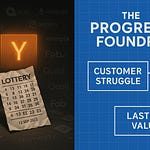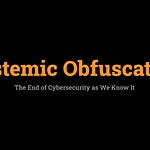Introduction: The End of the “Job” as We Know It
You’ve seen the headlines. A new AI model can write code, design graphics, or draft legal documents in seconds. For many of us, the abstract fear of automation is no longer abstract. It’s a creeping reality that makes you wonder: Is my job next?
This question creates a deep sense of uncertainty. The traditional career path—get a degree, land a stable job, climb the ladder—feels increasingly fragile. But what if we're looking at this all wrong? What if the rise of AI isn't the end of work, but the end of the job as we know it?
This isn't a story about an impending apocalypse. It's a story about a fundamental shift. We are moving away from an economy based on standardized tasks and toward one that values unique human contribution above all else. This is the dawn of the Artisan Economy.
This post is your guide to navigating this new world. It’s not about finding another job; it’s about building a new kind of career. One that is resilient, fulfilling, and, most importantly, uniquely yours. It’s time to stop worrying about being replaced and start building something that AI can never replicate.
Part 1: Why Competing with AI is a Losing Game
The knee-jerk reaction to AI is to "upskill" in ways that seem AI-adjacent. We're told to become "prompt engineers" or "AI ethicists." While these roles have a place, they represent a fundamental misunderstanding of the challenge. Trying to beat AI at its own game—speed, data processing, pattern recognition—is a race you will eventually lose. Learning to write slightly better prompts for an AI that is improving exponentially is a short-term tactic, not a long-term strategy. It keeps you in the passenger seat, dependent on the tool of the day.
The real transformation is in the abstraction of labor. Think about the evolution of technology. We used to have rooms full of human "computers" calculating missile trajectories. Then we invented the electronic computer. The job of "calculating" was abstracted away. We no longer needed to focus on the how; we could focus on the what and the why.
AI is doing the same thing for knowledge work. It is abstracting away the need to perform repetitive cognitive tasks. The job isn't to write a generic marketing email; AI can do that. The job is to envision the entire marketing strategy, to understand the customer's emotional needs, and to create a message so unique it cuts through the noise. AI becomes a powerful tool, but you are the architect. True security doesn't come from being a better operator of someone else's machine; it comes from being the irreplaceable mind that directs the work.
Part 2: The Rise of the Artisan Economy
If we can't compete on tasks, we must compete on a different axis entirely. We must compete on humanity. The Artisan Economy is an economic model where value is generated through skills that are profoundly difficult, if not impossible, to automate. These are not just the traditional crafts of woodworking or pottery. They are the human-centric skills of the 21st century:
Creativity: Generating novel ideas and connecting disparate concepts.
Critical Thinking: Analyzing complex situations and exercising nuanced judgment.
Emotional Intelligence: Empathizing, persuading, and building deep relationships.
Digital Craftsmanship: Wielding technology not just for efficiency, but with a unique style and point of view.
This new economy operates on a different set of rules:
Focus on Uniqueness: Your personal history, your niche interests, your distinct voice—these are not unprofessional quirks; they are your greatest economic assets.
Direct-to-Community: Instead of relying on corporate gatekeepers, you build a loyal audience or client base that is invested in you and your work.
Value over Volume: The goal isn't to produce the most, but to produce the most meaningful. A single, insightful analysis is more valuable than a hundred generic reports.
Part 3: The Core Unit - Your "Personal Enterprise"
To thrive in this new economy, you need a new mindset. You are no longer just an employee, a freelancer, or a gig worker. You are an entrepreneur whose product is you. It’s time to stop thinking of your career as a series of jobs you hold and start thinking of it as a business you are building. You are the founder, CEO, and lead creative of "You, Inc."
A Personal Enterprise is a strategic framework for organizing your talents, building your reputation, and creating multiple streams of income that are not tied to a single employer. Every skill you learn, every project you complete, and every connection you make is an investment in this enterprise.
People are already doing this today, often without the formal label. They are succeeding through two key practices:
Skill Stacking: They don't just have one skill; they have a unique combination that is nearly impossible to replicate. Think of the data scientist who is also a compelling storyteller, the lawyer who is a brilliant community builder, or the engineer who is also an ethicist.
Building in Public: They don't hide their work until it's perfect. They share their process, their learnings, and their failures. This transparency builds trust and attracts a community of people who want to see them succeed.
Part 4: The Next Frontier - The Artisan Orchestration Layer
Here’s the inevitable problem: what happens when everyone starts thinking like a Personal Enterprise? The market becomes flooded. When every former white-collar worker is now a "creator," "consultant," or "coach," discovery becomes difficult and trust becomes scarce. Simply having a Substack, a YouTube channel, or a portfolio site isn't enough to cut through the noise.
This is where the next great innovation opportunity lies. We need an Orchestration Layer. This is the critical infrastructure—a system, platform, or protocol—that allows individual artisans to connect, transact, and build reputation at scale. It's not a single company; it's the "road system" for the Artisan Economy.
The foundation of this layer is the "Skill API" concept. Imagine your professional skills are not just lines on a resume, but are programmatically accessible to the world. Your Personal Enterprise exposes a set of "endpoints" like [consult_on_brand_strategy] or [develop_financial_model]. Your public proof of work acts as the documentation. The Orchestration Layer can then index and query these APIs, matching talent to opportunity with incredible efficiency.
But who controls this powerful layer? How could it be structured?
Model 1: The Decentralized Autonomous Organization (DAO): The most idealistic and empowering model. A network owned and governed by the artisans themselves. Your reputation, based on verified proof of work, grants you voting power and a share of the value created. Who controls it? The members. This ensures fairness and prevents a single corporation from becoming the new gatekeeper.
Model 2: The Human-Led Curation Guild: Think of it as a "Michelin Guide for Talent." These are specialized, often boutique, entities that build their brand on having impeccable taste and rigorous vetting standards. They are professional curators. You might apply or be invited to join a guild focused on "AI Ethics in Finance" or "Sustainable Product Design." Who controls it? The guild's expert curators, whose own reputations are on the line.
Model 3: The AI-Powered Aggregator: A hyper-intelligent engine that constantly scours the web, analyzing every blog post, code repository, and video to create a dynamic, objective reputation score for every artisan. It would be the ultimate "Google for Talent." Who controls it? The algorithm and its creators, posing a risk of creating a new form of opaque, centralized power.
The most likely future is a Hybrid Protocol. A foundational, decentralized protocol (like the DAO model) could serve as the base layer of trust and identity. On top of this, anyone could build competing Curation Guilds or AI Aggregators as "lenses" or "filters." As an artisan, you would own your core identity and data on the base protocol, but you could choose to be represented by different guilds or indexed by various AIs to increase your visibility. This provides both security and choice.
Part 5: How to Compete in a Crowded Artisan Economy
In a world flooded with artisans, success is not about shouting louder; it’s about having a clearer signal. The job-to-be-done for you as a professional shifts from getting noticed to being the undeniable choice within a specific domain. Here’s how you achieve that.
Strategy 1: Radical Niching: You cannot be everything to everyone. The market will punish generalists. Go deeper, not broader. Don't be "a writer." Be "the go-to expert on crafting brand narratives for Series A climate-tech startups." The riches are in the niches that are too small for large corporations to notice but are the perfect size to dominate as a Personal Enterprise. This focus makes your signal sharp and clear.
Strategy 2: Mastering the Art of "Proof of Work": Your portfolio is everything. A resume is a list of claims; proof of work is a body of evidence. This evidence must be public, verifiable, and compelling. It's not just showing the final product; it's revealing the thinking behind it. Examples of powerful proof of work include open-source code contributions, detailed case studies with measurable outcomes, a public track record of accurate predictions in your field, or a series of articles that fundamentally change how people think about a topic.
Strategy 3: Building "Trust Networks": An audience watches; a community participates; a trust network advocates. Move beyond follower counts. Cultivate a core group of peers, clients, and collaborators who will vouch for you. This is built through immense generosity: actively helping others, participating in discussions, collaborating on projects, and connecting people within your network. When someone in your trust network recommends you, it bypasses the noise entirely.
Strategy 4: Engaging with the Orchestration Layer: You must proactively design your Personal Enterprise to thrive within the emerging infrastructure. This means contributing to a relevant DAO to build governance rights and reputation. It means identifying and submitting your work to the most respected Curation Guilds in your niche. It means structuring your public content and data so it can be favorably interpreted by the AI aggregators. You are no longer just producing work; you are curating your own professional identity for both human and machine interpretation.
Part 6: A Practical Guide to Building Your Personal Enterprise (Expanded)
Identify Your Artisan Skillset: Get brutally honest. What are your top three hard skills? What are the soft skills you are consistently praised for? What topics give you energy? Your unique value is at the intersection of these three areas.
Define Your Radical Niche and Audience: Use your skillset to define a very specific problem you can solve for a very specific group of people. Write it down: "I help [specific audience] solve [specific problem] by using my unique skill of [your unique skill stack]."
Build Your Platform (Your "Home Base"): Secure a piece of digital real estate that you own—a personal website with a blog or newsletter is ideal. This is your central hub, your source of truth. Social media profiles are outposts that all point back to your home base.
Create Your Verifiable "Proof of Work": Start a project today. Write the first article in a definitive series. Analyze a public company's strategy. Create a free tool or template. Don't wait for permission. Your goal is to create a body of work so compelling that your expertise is self-evident.
Build Your Trust Network: Identify 20 people in your field you admire. Find five you can genuinely help this month. Make introductions, share their work, or offer feedback. Give value relentlessly with no expectation of immediate return. This is the seedbed of your network.
Prepare for the Orchestration Layer: Start acting as if the system already exists. Create a single, professional online identity. Consolidate your proof of work onto your home base. Write and speak using clear, structured language about your niche. You are creating the data set that future systems will use to find and evaluate you.
Monetize Your Skills: Once you have a niche, proof of work, and a budding network, you can explore monetization: targeted consulting, project-based work, premium content, or coaching. The key is that opportunities will start coming to you, because your signal is finally clear.
Conclusion: Your Future is a Network, Not a Ladder
The fear surrounding AI comes from the perspective of the old world—a world of corporate ladders, standardized jobs, and siloed careers. That world is fading. The future of work does not belong to those who can perform tasks the fastest. It belongs to the artisans, the connectors, the creative thinkers, and the unique individuals who build a Personal Enterprise around their distinct value.
But more importantly, it belongs to those who understand that individual success is contingent on the health and sophistication of the network. The challenge for our time is not simply to become individual creators, but to collectively build the platforms, protocols, and trust systems that allow the best ideas and talents to flourish.
Your future is not a ladder you climb. It's a network you help build, and your place in it is one you must design for yourself. The empowering truth is this: the challenge is no longer "how do I survive?" but rather, "what role will I play in building this new economy?"
What's one example of a 'curation guild' or 'trust network' you already see emerging today, even in a small way?
Reference Table for Novel Concepts
Follow me on 𝕏: https://x.com/mikeboysen
If you'd like to see how I apply a higher level of abstraction to the front-end of innovation, please reach out. My availability is limited.
Mike Boysen - www.pjtbd.com
Why fail fast when you can succeed the first time?
📆 Book an appointment: https://pjtbd.com/book-mike
Join our community: https://pjtbd.com/join
















Share this post